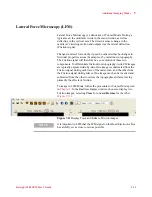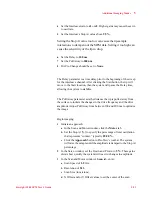
Additional Imaging Modes
5
Keysight 5500 SPM User’s Guide
5-13
Lateral Force Microscopy (LFM)
Lateral Force Microscopy is a derivative of Contact Mode. During a
typical scan, the cantilever twists in the scan direction as well as
deflecting in the vertical axis. The detector senses change in the
cantilever‘s twisting motion and outputs it as the lateral deflection
(Friction) signal.
Changes in lateral force on the tip can be caused either by changes in
frictional properties across the sample or by variations in topography.
The Friction signal will therefore be a convolution of these two
components. To differentiate friction from topography, two LFM images
are typically captured side-by-side. One image is constructed from the
Friction signal during each trace of the raster scan, and the other from
the Friction signal during retrace. One image can then be inverted and
subtracted from the other to reduce the topographic artifacts, leaving
primarily the effects of friction.
To image in LFM Mode, follow the procedure for Contact Mode given
in
. In the Realtime Images window, choose to display two
Friction images, selecting
Trace
for one and
Retrace
for the other
Figure 7-11
Display Trace and Retrace Friction images
NOTE
It is important in LFM that the LFM signal on the Head Electronics Box
be carefully set as close to zero as possible.















































